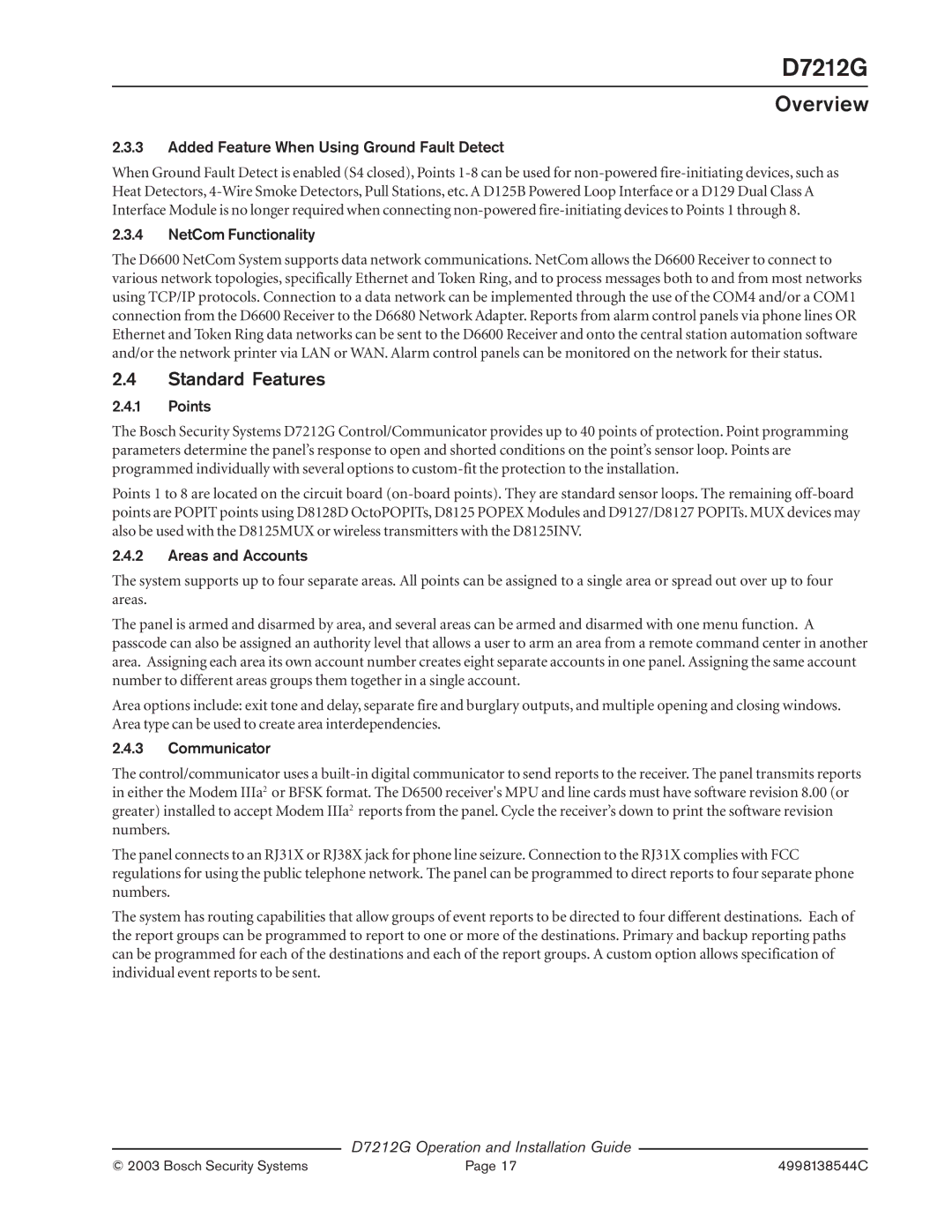
D7212G
Overview
2.3.3Added Feature When Using Ground Fault Detect
When Ground Fault Detect is enabled (S4 closed), Points
2.3.4NetCom Functionality
The D6600 NetCom System supports data network communications. NetCom allows the D6600 Receiver to connect to various network topologies, specifically Ethernet and Token Ring, and to process messages both to and from most networks using TCP/IP protocols. Connection to a data network can be implemented through the use of the COM4 and/or a COM1 connection from the D6600 Receiver to the D6680 Network Adapter. Reports from alarm control panels via phone lines OR Ethernet and Token Ring data networks can be sent to the D6600 Receiver and onto the central station automation software and/or the network printer via LAN or WAN. Alarm control panels can be monitored on the network for their status.
2.4Standard Features
2.4.1Points
The Bosch Security Systems D7212G Control/Communicator provides up to 40 points of protection. Point programming parameters determine the panel’s response to open and shorted conditions on the point’s sensor loop. Points are programmed individually with several options to
Points 1 to 8 are located on the circuit board
2.4.2Areas and Accounts
The system supports up to four separate areas. All points can be assigned to a single area or spread out over up to four areas.
The panel is armed and disarmed by area, and several areas can be armed and disarmed with one menu function. A passcode can also be assigned an authority level that allows a user to arm an area from a remote command center in another area. Assigning each area its own account number creates eight separate accounts in one panel. Assigning the same account number to different areas groups them together in a single account.
Area options include: exit tone and delay, separate fire and burglary outputs, and multiple opening and closing windows. Area type can be used to create area interdependencies.
2.4.3Communicator
The control/communicator uses a
The panel connects to an RJ31X or RJ38X jack for phone line seizure. Connection to the RJ31X complies with FCC regulations for using the public telephone network. The panel can be programmed to direct reports to four separate phone numbers.
The system has routing capabilities that allow groups of event reports to be directed to four different destinations. Each of the report groups can be programmed to report to one or more of the destinations. Primary and backup reporting paths can be programmed for each of the destinations and each of the report groups. A custom option allows specification of individual event reports to be sent.
D7212G Operation and Installation Guide
© 2003 Bosch Security Systems | Page 17 | 4998138544C |
